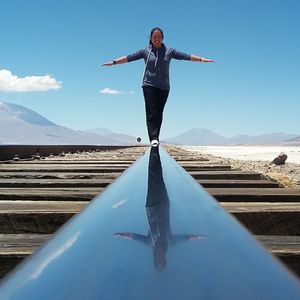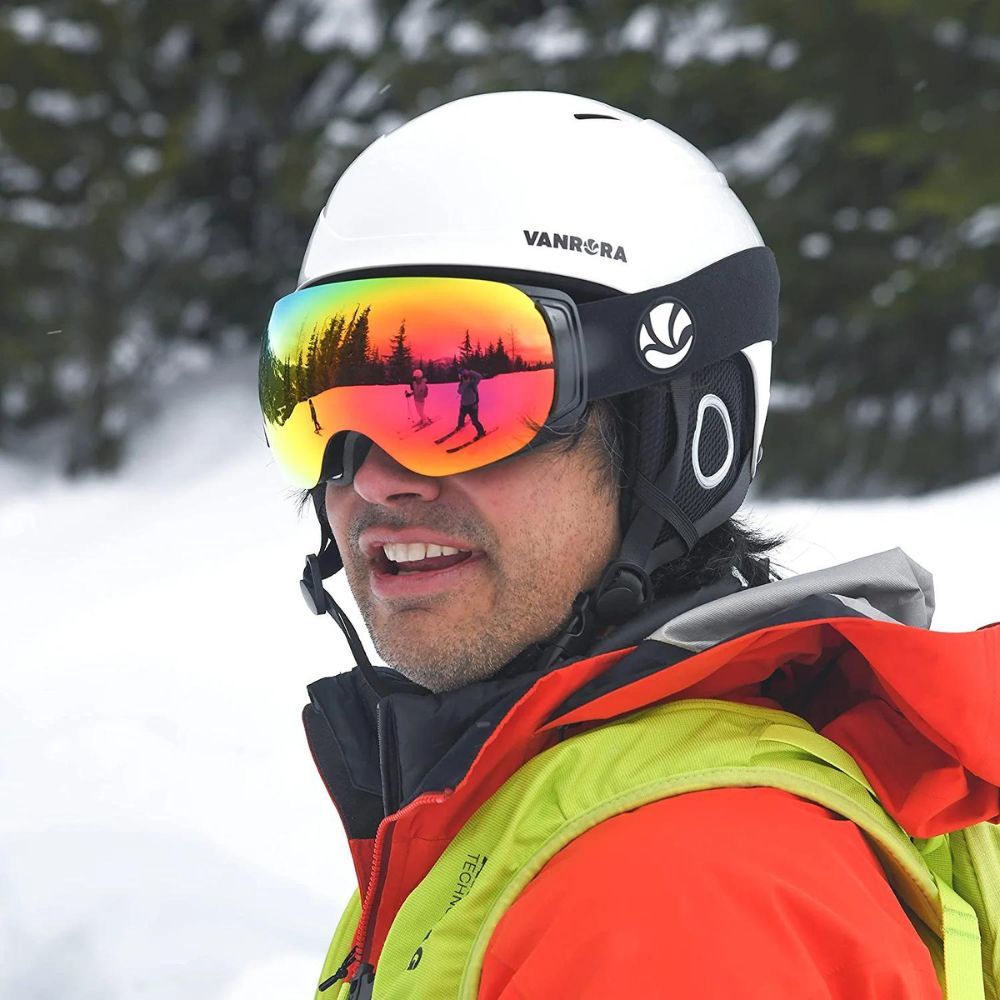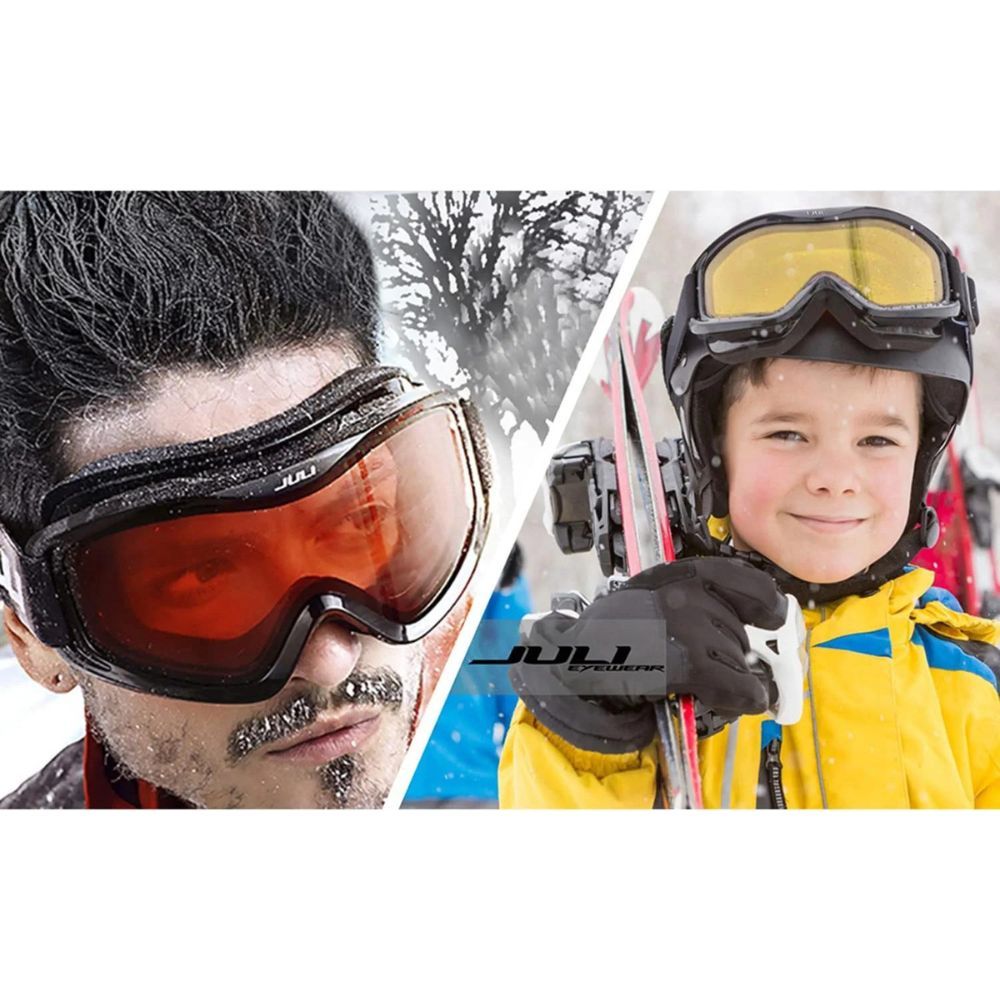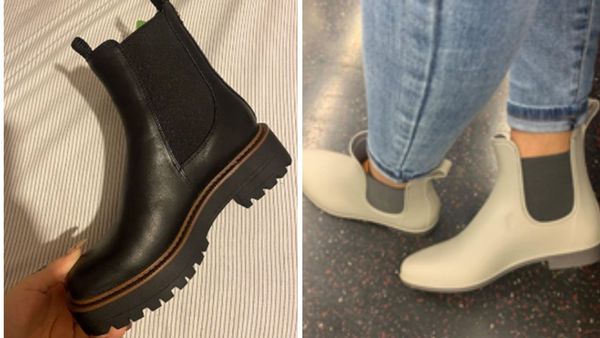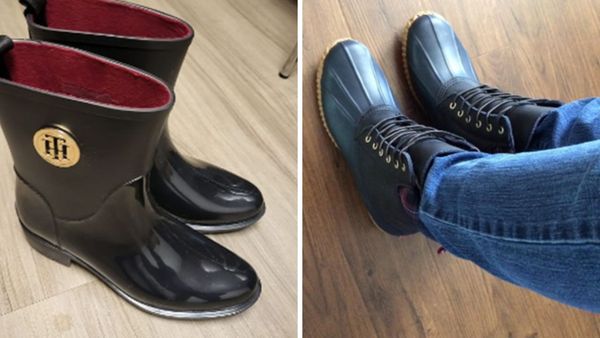Ready to hit the slopes this winter?
Skiing is an amazing way to get out in the snow and have some fun, but it’s important to make sure you have the right gear. Polarized ski goggles are a must-have for any skier, as they reduce glare and make it easier to see the terrain ahead. We’ve rounded up the five best polarized ski goggles you can buy on Amazon so that you can hit the slopes in style and safety.
From sleek, modern designs to classic and traditional frames, these goggles will keep your eyes safe and you looking good. With features like UV protection, anti-fog lenses, and adjustable straps, you can be sure you’ll be able to enjoy your skiing experience in comfort and style.
Get the inside scoop on the top 5 polarized ski goggles available to purchase on Amazon and hit the slopes this season!
How We Choose The Best Polarized Ski Goggles For You
You want to buy polarized ski goggles, but don't know which ones will provide the best protection and visibility.
It can be hard to find the perfect pair of polarized ski goggles because there are so many different brands and types available. How do you know which ones will give you the best protection and visibility on the slopes?
Our team of ski and snowboard experts has read thousands of reviews on Amazon to find the best polarized ski goggles for your needs. We've done all the hard work so that you can easily find and purchase the perfect pair of goggles for your next ski trip.
We hope you will discover your next great find from the products we’ve listed in this article. As an Amazon affiliate, we do earn commissions from qualifying purchases. However, each of our recommendations is our own and has been chosen with love and care. Enjoy finding your favorite supplies and equipment for your someday to your everyday!

OMID V1 Polarized Magnetic Lens Ski Goggles
The Greatest Mid Range Polarized Ski Goggles
Why It's Great
Don't let harsh winter sunlight limit your fun in the snow! The OMID V1 Polarized Magnetic Lens Ski Goggles offer unbeatable protection and visibility on the slopes. The lenses block intense glare, 95% of harmful blue light, and shield your eyes from UVA/UVB rays with 100% UV protection. Plus, their sleek and modern frameless design and spherical lens help maintain a maximum field of view – so that the whole mountain is at your fingertips! And for those who usually wear glasses, these goggles are specially designed to fit over them – giving you and your family all the comfort and protection you need for a thrilling day of skiing or snowboarding! Get ready to make this winter season one for the books with OMID V1 Goggles!
Buyer Considerations
If you're an avid skier, polarized snow goggles are a must! With the OMID V1 polarized magnetic lens ski goggles, you can switch between interchangeable lenses in under 5 seconds to maximize your safety in any weather condition. It's as quick as a superhero suit change. 8 powerful earth magnets hold the polarized lenses firmly into place so you don't have to worry when you take a tumble. Plus, dual-layer lens design and anti-fog technology keep the fogging down, allowing for maximum visibility no matter where or how fast you're going. Get ready to charge down that mountain with the OMID V1 polarized magnetic lens ski goggles and start living your best on-the-slopes life!
Why It's Great
Feeling ready to hit the slopes? Make sure you're fully prepared for any snow situation with VANRORA Ski Goggles! Don't let any light condition hold you back - these goggles are equipped with a dual fastening system that includes 6 magnets and a side-clip locking system. These allow you to interchange lenses with ease as well as provide extra hold so your lenses won't pop off during a nasty tumble. Plus, the variety of extra lenses available separately (including polarized and photochromic lenses) will help keep your vision clear on even the brightest days.
Utilizing modern lens curves, the peripheral vision is greatly expanded to ensure an unobstructed view of the slopes with no distortion. The high-quality polycarbonate injection-molded lens also provides crystal-clear visuals making it perfect for all skiing and snowboarding adventures.
But that's not all - along with crystal clear sight comes extreme comfort. Featuring triple-layer face foam, an anti-slip silicone backed strap, and a durable-yet-safe TPU frame, these goggles are perfect for full-day use on the mountain. So don't worry about eye strain fiddling or fogging when sea-level turns peak level! With VANRORA Ski Goggles, you can go from peak to park without needing a break.
Buyer Considerations
Get the ultimate ski experience with VANRORA’s ski goggles! The special double-layer lens design and high-performance hydrophilic coating keep vision clear in all of the elements with less fog formation. Plus, the efficient ventilation system delivers maximum airflow to keep your vision clearer and fog-free from start to finish. If polarized lenses are a must-have for you, they are available as a separate purchase here. Get everything you need in one package — one pair of polarized X-mag snow goggles, a microfiber pouch, and friendly customer support included. Enjoy nonstop comfort and crystal-clear vision no matter what your skiing trip has in store!

COPOZZ Polarized Ski Goggles
The Greatest Polarized Ski Goggles for Small Budgets
Why It's Great
Looking for something a whole lot cooler than your regular ski goggles? Look no further! These COPOZZ Polarized Ski Goggles are here to revolutionize the way you look and feel on the slopes. With their performance double-layer lens coming from Italy, complete with long-lasting anti-fogging treatment, you can stay focused and safe all through whatever winter activity you choose to take part in. Additionally, the large spherical frameless design offers an unobstructed view so you never miss out on any of nature's breathtaking moments while skiing or snowboarding. Best of all these amazing goggles also come with an OTG (over glasses) design and helmet compatibility that ensures ultimate comfort and performance every time - so you don't need to worry your glasses won't fit! So if you want to look cool (literally) while skiing or snowboarding this season be sure to grab yourself a pair of these COPOZZ Polarized Ski Goggles - your eyes won't regret it!
Buyer Considerations
If you're a ski enthusiast looking for the perfect polarized ski goggles, look no further than COPOZZ Polarized Ski Goggles! These goggles hug your face with multiple layers of high-density breathable foam to keep your face warm while also providing anti-wind protection. The 2-way ventilation system ensures smooth air flow at all times so you can have fresh air and dissipate moisture quickly and effectively while skiing. Best of all, you can customize your wear to the current lighting conditions with various tints and VLT-rated (visible light transmission) lenses available. And even better, your purchase is backed by a 30-day money-back guarantee as well as a 1-year warranty - a total value that's hard to beat!
Why It's Great
Introducing the WildHorn Outfitters Roca Ski Goggles: They're like your best friend on the slopes - almost indestructible, ridiculously comfortable, and always got your back when you need it. Crafted with Aurora lens technology and a lens shape framed by super durable thermoplastic urethane polymer material with a premium soft-touch anti-slip coating, these stylish ski goggles are built to help you take on any terrain. With 100% UV protection and spherical lenses for maximum visibility that's even better than polarized lenses (according to reviewers!), you can hit the slopes knowing that you're covered. Make elevation easy with their magnetic changeable lens clip locking system for quick, custom adjustments in any lighting conditions. Get ready to dominate your next skiing adventure!
Buyer Considerations
If you're serious about hitting the slopes in style, then check out Wildhorn Outfitters’ Roca polarized ski goggles. Unlike other inferior brands, these polarized ski goggles are made with only the highest grade triple-layer foam and shatterproof ultra-strong poly-carbonate material, ensuring maximum comfort and durability no matter how hard you hit the powder! What's more, the U.S. Ski & Snowboard Team (the National and Olympic governing body) trusts Wildhorn Outfitters to outfit their team—and if they trust them to perform in the most high-profile action sports around the world, you can trust them to keep your vision clear while you shred too! Plus, these polarized ski goggles come with 7 interchangeable Aurora lens options that range from a wide range of colors and tints for all-day use—you're guaranteed to make everyone jealous on the mountain!
Why It's Great
Get your kids ski-ready with these Juli Ski Goggles! These incredible goggles from Juli have all the features you need to let your kids laugh, play, and safely ski down the slopes. Designed with cut-outs in the frame that make them fit over most kids' glasses, Juli Ski Goggles are suitable for both boys and girls aged 3 to 8. Plus, you don’t need to worry about their exposure to harmful UVA/UVB rays — their JULI lenses block 100% of them so they can ski all day without compromise. And if fun turns into an accident, don’t sweat it — the TPU frame provides extra safety compared to a harder frame! The classic, traditional design of these children's ski goggles makes dressing up for a day out on the slopes super easy - without sacrificing safety or style! So what are you waiting for? Put on those Juli Ski Goggles and hit the mountain with confidence!
Buyer Considerations
The Juli Ski Goggles are designed with a professional ventilation system to provide the best ski experience possible. The polarized lenses reduce fogging of the lenses, making your vision much clearer so you can make the most out of your time on the slopes. What's more, these dual-layer lenses are also anti-fog coated and come in adult sizes for all shapes and sizes of skiers. So stay safe, have fun, and enjoy a fog-free experience with Juli Ski Goggles.
Frequently Asked Questions About Polarized Goggles
You want to buy a pair of polarized ski goggles, but don't know which ones to choose.
With so many different brands and types of polarized ski goggles out there, it can be hard to decide which ones are best for you. You need to make sure you get a pair that will provide the best protection and visibility, but it can be tough to know which ones have the features you need.
We've compiled a list of the most frequently asked questions about polarized ski goggles so you can make an informed decision when buying yours.
Is it better to have polarized ski goggles?
Absolutely! Polarized ski goggles can make all the difference when it comes to comfort and safety while skiing or snowboarding. Polarized ski goggles work by reducing glare from the sun, snow, and ice which helps improve visibility on the slopes. On snowy days, light is reflected off of flat surfaces such as the ground or trees in all directions making it hard to see where you're going. Polarizers help to eliminate this problem by filtering out those horizontal light components that cause us to squint and strain our eyes in an effort to see better. In addition, because they selectively block certain wavelengths of light they also help reduce eye fatigue caused by UV radiation exposure.
Polarized lenses also enhance contrast and depth perception which makes seeing potential obstructions like rocks easier while allowing you to keep your speed up with fewer visual distractions. Finally, many polarized ski goggle lenses come with additional coatings that can provide enhanced scratch resistivity for some added durability on those runs through thick trees and over rough terrain. So in short: yes! Having a pair of polarized ski goggles is definitely worth it for both comfort and safety reasons!
Is there a downside to polarized lenses?
When it comes to ski goggles, most people opt for polarized lenses due to their powerful glare protection and color-enhancing capabilities. However, there are a few potential downsides of polarized lenses you should consider before purchasing your own pair of ski goggles.
First, the polarized tint can make it difficult to see certain displays (such as LCD screens) in bright light conditions. This could be a nuisance if you're trying to use your phone or other devices on the slopes. This can also make it difficult to read your lift ticket while waiting in line at the chairlift, so be sure you keep that accessible!
Second, since they reduce glare by filtering out reflected light instead of absorbing it like regular tinted lenses do, they don't offer as much coverage against UV radiation – meaning you may need additional glasses or eye protection when outdoors during hot sunny days. Finally, they tend to cost more than regular tinted goggles and some users report that they can feel uncomfortable after extended wear due to the extra weight associated with them (although this is generally not an issue).
All things considered though, most skiers agree that the benefits outweigh any potential downsides when choosing between polarized vs non-polarized lenses – better visibility in bright environments plus enhanced clarity and vividness of colors more than makes up for any minor issues that might come along with wearing them. Ultimately then whether or not polarised ski googles are right for you becomes a matter of personal preference!
What color polarized lens is best for snow?
Polarized lenses are essential for snow-related outdoor activities because they reduce glare and eye fatigue, particularly in bright environments. The right color lens depends on how extreme the light conditions will be.
For low light conditions such as during cloudy days or when skiing in the trees, a yellow lens is ideal as it improves contrast and enhances visibility while still providing decent protection from UV rays. If you expect to be dealing with mid-level brightness conditions, like overcast skies or moderately sunny days, then a rose/copper hue lens is better suited to improve contrast and provide an overall warmer tone than other colors.
When it comes to high brightness situations like bright bluebird days or snowmobiling out of bounds, then gray polarized lenses are best for reducing intense glare and preserving the natural colors without affecting your vision too much; however this type of lens does not block out all wavelengths so additional protection in these scenarios may be needed. For extreme mountain environments where there is particularly harsh sunlight that could cause permanent damage to your eyes if left unprotected, there are manufacturers making extra dark goggles with amber/orange colored lenses that can offer up to 400% more protection than standard sunglasses!
No matter what kind of environment you find yourself in, using polarized lenses will always guarantee better visual comfort during any sort of winter activity - just make sure you pick the correct color based on the level of lighting that day!
Why are most ski goggles not polarized?
Most ski goggles are not polarized for a few different reasons. First and foremost, it's important to understand that the purpose of ski goggles is primarily to protect your eyes from the elements - namely wind, snow, ice and ultraviolet light. Polarization has little bearing in protecting these factors which is why most ski goggles are not polarized.
However, there are certain benefits of polarizing your ski goggles. Polarized lenses reduce glare significantly, making visibility much better on sunny days when light is reflecting off snow or ice covered slopes. They can also help you see more clearly through foggy conditions as some glares will be filtered out by the lenses themselves.
But with all this being said, most people don't need polarization in their ski googles because they're already well equipped to deal with standard weather conditions found on the mountain and won't need any extra range of vision provided by polarized lenses; in essence they just wouldn't get enough bang for their buck out of a polarized lens to justify purchasing them over regular non polarized ski goggles. Additionally, given how quickly fog can form on mountainsides during bad weather there isn’t really enough time for skiers/snowboarders to switch between two sets of googles respectively optimized for clear versus foggy days - so having an option with easy access at all times seems like the better solution here if you want optimal eye protection anyway.
Is a polarized lens better than a non polarized lens for skiing?
Yes, polarized lenses are generally better than non-polarized lenses for skiing because they reduce glare and increase contrast, allowing you to better see the contours of the mountain. Polarization blocks out light reflecting off surfaces—such as the sun on snow—which can cause excessive brightness, distortions, and decrease depth perception.
Polarized lenses block out this reflected light while also reducing eye fatigue caused by bright sunlight bouncing off all types of surfaces like rocks, snow banks, and wet pavement that would otherwise cause distractions when you're hitting high speeds downhill. This enables you to focus more clearly on where you’re going so that you can stay safe and enjoy your time on the slopes worry-free.
Having said that, not all polarized lens glasses are created equal! Different brands use different technologies to create their polarized lenses which will affect how much glare is blocked out and how clear your vision will be. Doing some research ahead of time or asking for advice from experts could help ensure that the pair of sunglasses or goggles you choose is right for your needs.
At the end of the day, choosing between a polarized lens and a non-polarized lens should be based on user preference and what activities they plan on getting involved in while enjoying skiing's beautiful trails throughout the wintertime.
What color polarized lens is best?
When selecting the best color polarized lens for skiing, there are many factors to consider. The most important factor is the level of glare you'll be faced with on the mountain. Polarised lenses reduce glare and can help enhance contrast, making objects appear clearer and sharper in bright sunlight.
The color of the polarised lens makes a difference when it comes to ski goggles because different colors reflect light differently based on their wavelength; some colors are better at reducing glare than others depending on your environment. Generally speaking, brown lenses provide an overall good balance between enhancing color contrast and clarity while still cutting out a majority of unnecessary brightness without distorting colors or images too much. Brown is also great for highlighting features like moguls, bumps, trees, and rocks which helps you identify them as you ski down the mountain quickly.
For days that tend to be overcast yellow/amber lenses have proved beneficial as they tend to help perceive more details in snowy conditions by cutting through haze and fogging effectively when compared to other colors like purple or blue which can sometimes leave everything looking washed out under specific conditions.
Red is another option that has become popular among skiers recently since it offers great protection from UV rays while still providing excellent visibility under low-light situations such as night skiing or evening runs when darkness starts setting in earlier than usual due to snowstorms or other weather-related factors that might otherwise dim visibility severely if not wearing protective goggles with polarized lenses already included into their design structure (most do).
No matter what color polarised lens you choose (brown, yellow/amber red, etc.), make sure that they come equipped with an anti-scratch coating so they don’t get scratched easily while enjoying your favorite winter activities outdoors!
Which is better UV 400 or polarized lenses?
When it comes to protecting your eyes from UV rays, both UV 400 and polarized lenses have their pros and cons.
UV 400 lenses are designed to block out all light rays with wavelengths up to 400 nanometers. This includes most of the harmful UVA and UVB radiation that can damage the eye over time. These lenses offer great protection from UVA/UVB radiation, so if you’re looking for maximum protection against these kinds of lightwaves, then UV 400 would be a good choice for you.
Polarized lenses on the other hand, differ greatly in terms of safety—these blocks glare coming from horizontal surfaces like roads or ice by filtering out the reflected light horizontally. That said, they don't provide any extra protection against UVA/UVB radiation compared to non-polarized glasses; however they do decrease glare which is helpful when driving or engaging in activities around water bodies because they reduce surface reflection providing sharper visuals while preserving clarity and proper colors perception without changing its overall hue as much as regular sunglasses do.
All things considered, both types of lensing offer something beneficial when it comes to eye safety: one offers better protection against damaging elements while the other increases visibility due its polarizing properties. Ultimately, your choice should depend on what kind of environment you’ll be spending time in (around water bodies vs streets) and how much eye safety is important for you at that given moment.
How do you check if lenses are polarized?
Polarized lenses are incredibly useful when it comes to reducing glare and improving visibility. Checking if your lenses are polarized is actually quite easy, and can be done with a simple test using the right materials.
The most common way to check if your lenses are polarized is by using a Polaroid filter (also sometimes referred to as “polarizer” or “polarizing filter”). This type of filter blocks out light from certain directions, but allows light from other directions through – which is exactly what you need for polarization testing! So take your Polaroid filter and hold it over one of your lenses (at an angle so the light passing through isn't blocked). If the lens is polarized, then you should see the light passing through become darker in comparison with the other side.
Another way to check for polarization involves simply looking at objects that might produce significant amounts of glare, such as water surfaces or shiny cars. Put on your glasses and look at these surfaces; do they appear less bright? If yes, then congratulations – your glasses have polarization coating!
You can also perform a more intricate test involving two pairs of sunglasses. Take two pairs and place them together in front of a white surface - make sure one pair's arms are horizontal while the other pair's arms run vertically. Look into both pairs at once just like you would look at someone else wearing glasses – this means each eye will be looking into different frames simultaneously. Now you should see either reduced brightness in each direction (which could indicate partial polarization) or no difference between both sides whatsoever (which means there's no polarization effect).
Are all polarized lenses the same?
No, not all polarized lenses are the same. Polarized lenses have distinct levels of efficiency and features that vary from brand to brand. The main difference between different brands relates to the filter used in the lens; some filters block more light than others, while still providing glare protection. Additionally, due to their manufacturing processes, some polarized lenses are thinner or lighter than others, making them better suited for certain activities or environments.
The level of polarization also varies among brands and can be determined by measurements taken during laboratory testing such as transmission coefficient (T), absorbance factor (A), and extinction ratio (R). The higher these values are for a particular pair of polarizing glass or plastic lenses, the more efficient they will be at blocking out reflected light from surfaces like snow or water which contain reflecting agents known as horizontal polarized rays (HPRs). Generally speaking, higher quality polarized sunglasses should have a T value above 0.9 – meaning only 10% of HPRs pass through – and an A-value under 0.1%.
The best polarized ski goggles for you? Here is our recommendation.
Planning your next ski trip? Save yourself the hassle and time - we've gone through hundreds of customer reviews and picked out the five best polarized ski goggles on the market, so you don't have to! Pick your favorite product from our list, click 'check price' now, and get ready for a memorable alpine adventure.

